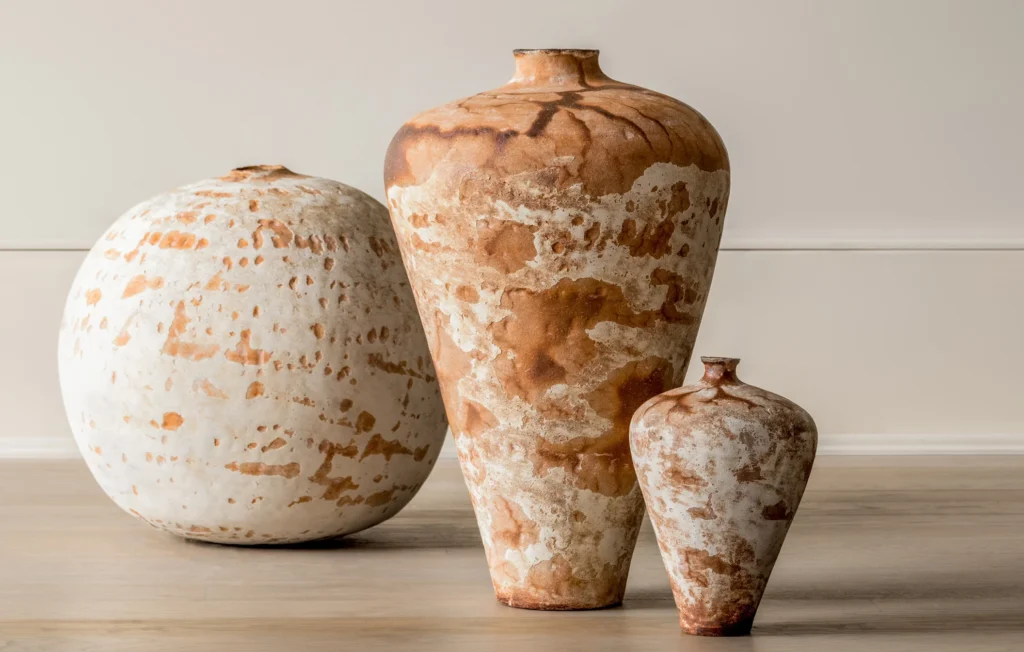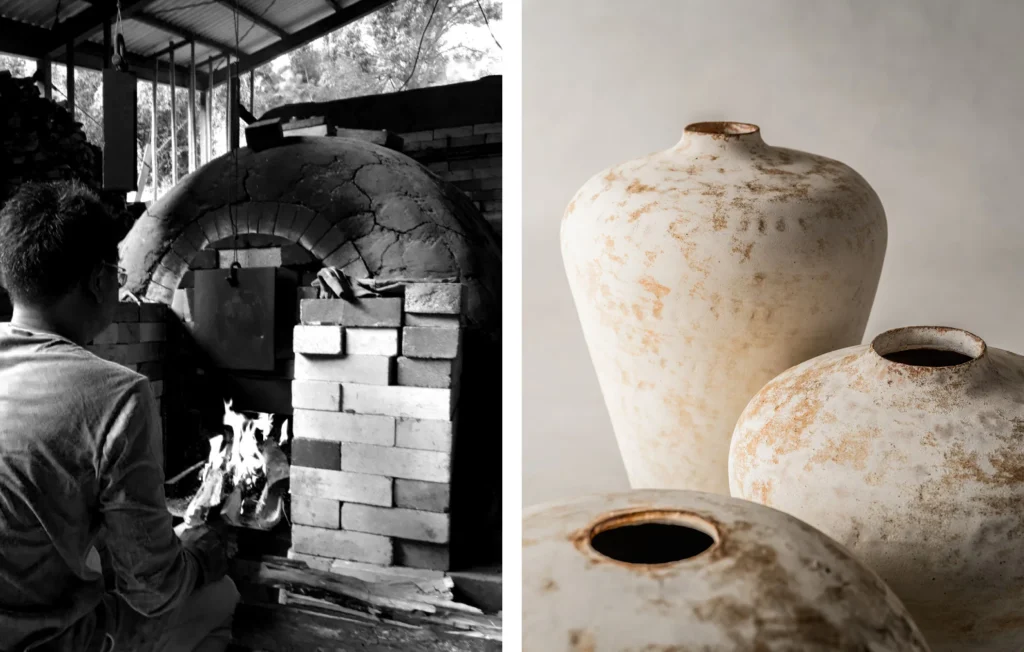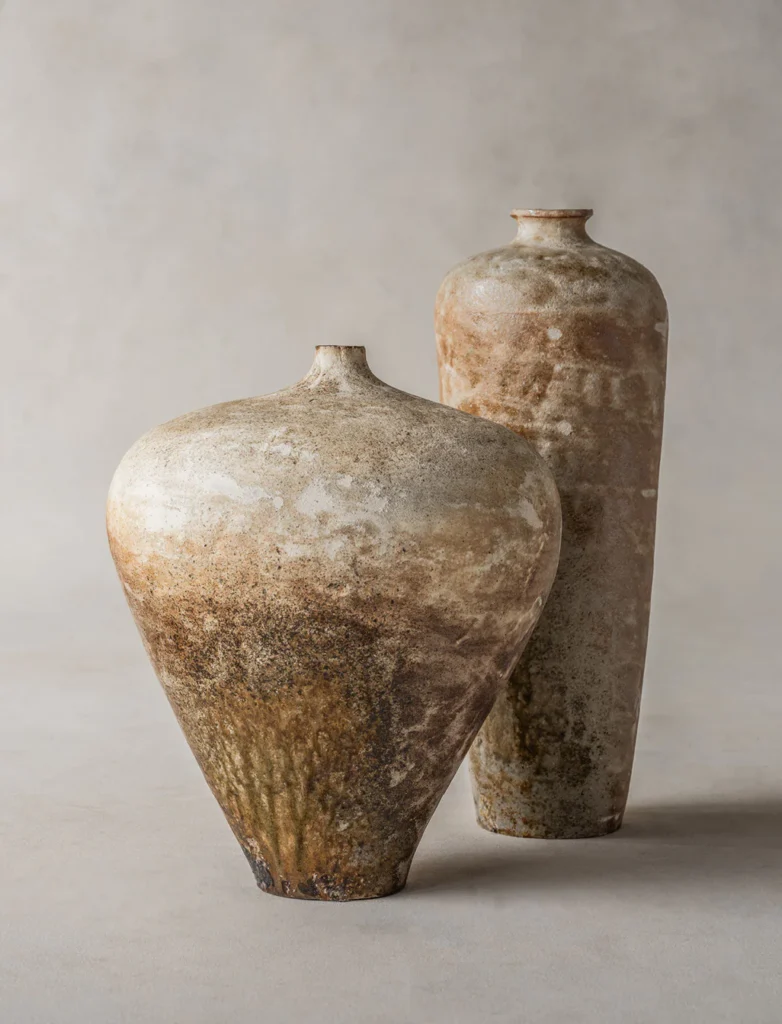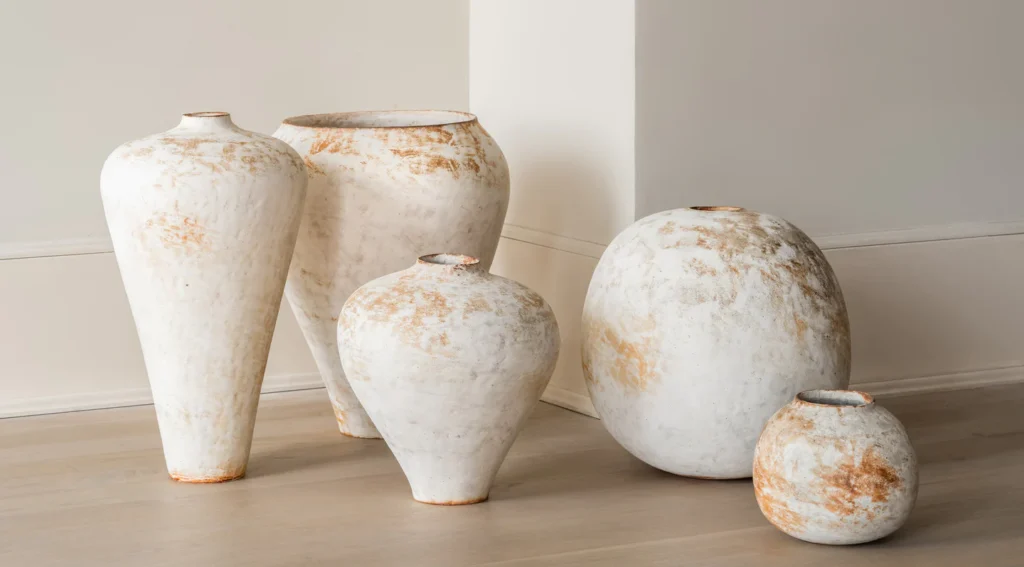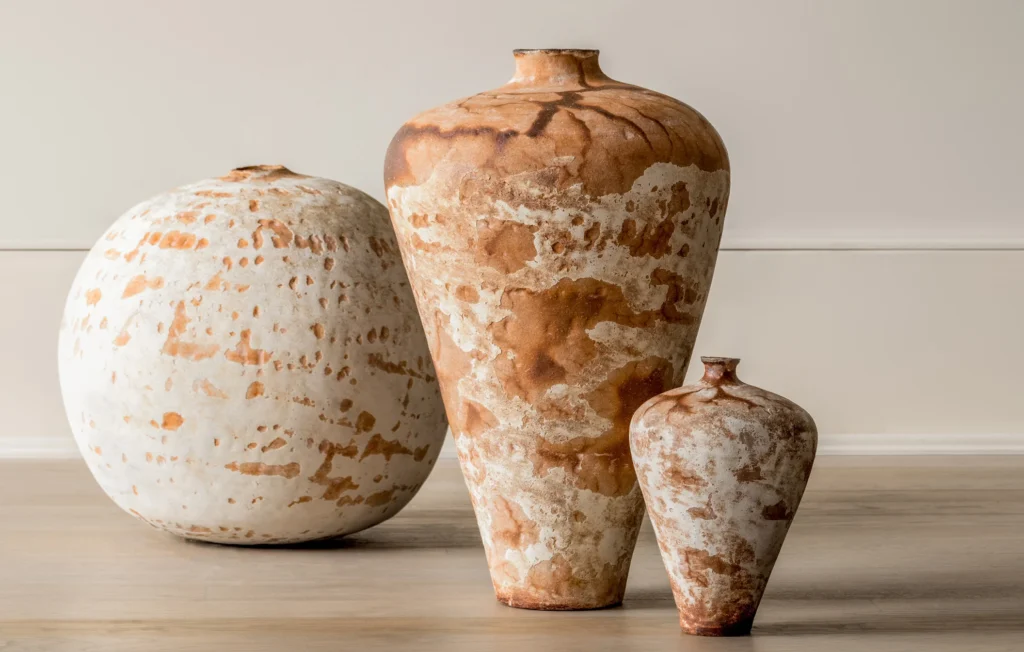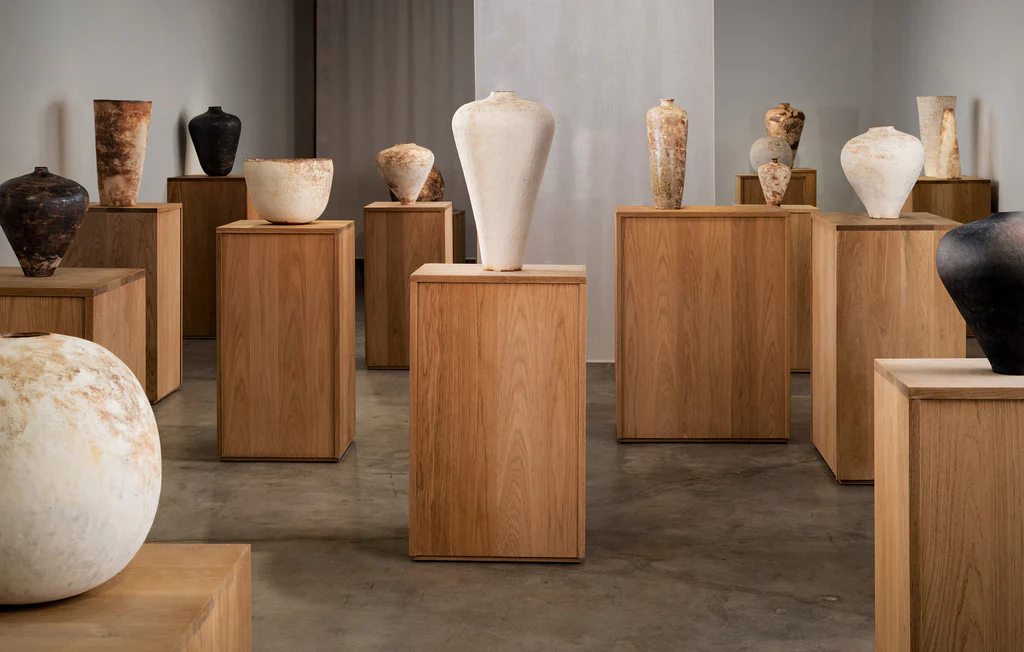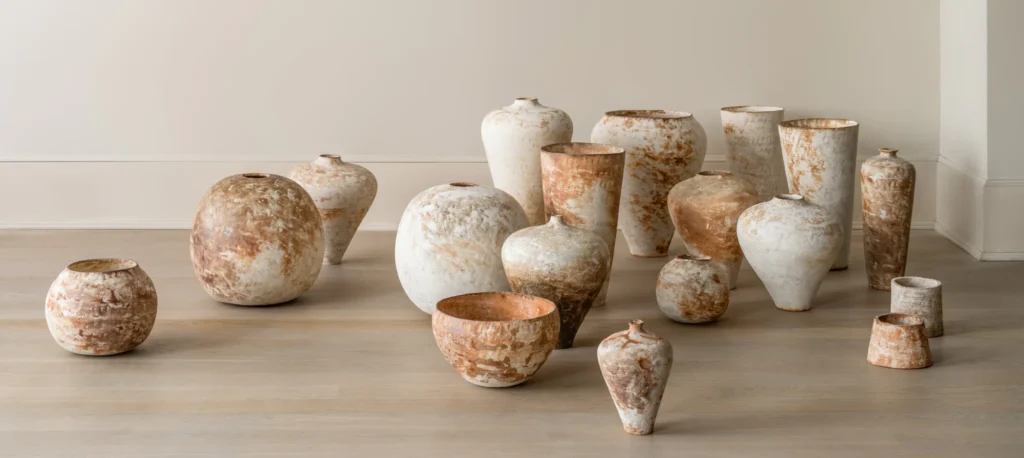
When you enter the Guild Gallery—where a new solo show of Japanese ceramicist Yoshimitsu Ishihara (b. 1971) just opened—you are taken in by the powerful expression of the pieces; enormous vessels, jars, and bowls, covered with white-washed surfaces and abstracted patterns in hues of earth that manifest the essential simple and distinctive look of Japanese aesthetics. The gallery is filled with them, each is differnet, each was formed by hand, each was fired in wood-burn kiln, and they are all displayed on a wooden pedestald like spiritual totems. All together they transform the gallery into a dazzling space which emphasizes the power of these clay objects.
Since the turn of the millenium, Japanese craftspeople have entered a journye of reinventing their heritage by revisiting ancient Japanese methods and materials to bring a new twist and create new contemporary art and design. As a national community, whether they work in the town or the conutry, whether they inherited the crafts from theri fathers or studied them at school, their tremendous respect for heritage and passion for preserving and perfecting their chosen crafts is unique, attaining Japanese kogei with contemporary allure. This process enables them to transcend conventions in order to bring Japanese crafts to new horizons. I am always most excited about such exhibitions which give us New Yorkers a rare opportunity to get a glimpse of the dynamic and exciting scene of contemporary crafts in Japan.
Yoshimitsu Ishihara received his education in art in both Tokyo and Kyoto, spending 6 years in the latter before moving back to his place of birth—Fukuoka, a town set on Japan’s westernmost island of Kyushu—20 years ago. His father is a ceramicist, and while at first he worked at his father’s studio, coming back home confirmed for him that this was what he wanted to do. He opened his studio and began developing his own voice. In his small remote studio, Yoshimitsu Ishihara has invented glazes and personal way of working with clay, while growing gradually, pushing the boundaries of ceramics, and evolving his oeuvre. This exhibition, presenting 40 works, marks a milestone in his career. While in the past he has produced tableware and small functional vessles, he prepared for this show for 2 years in order to make the largest works to date. The shapes are familiar, but not the appearance and the spirituality that clay can forge is certainly present in those works.
It isn’t just the inventive glazes that make his work contemporary, but also his commitment to ‘slow craft,’ which is the new direction in global design and culture. Think about Slow Food, the organization that promotes local food and traditional cooking; it is the same with slow craft in design. For Ishihara, it takes 6 months from start to finish to create each batch of new vessels and this process is inspired by living in nature and the environment around him.
Ishihara’s kiln is a sprawling, wood-fired ‘nobori-gama’ (or ‘climbing kiln’) that he built by hand and which he fuels with locally sourced pine he chops himself. Unlike most potters who ultimately wood-fire their pieces, Ishihara does not use an electric or gas kiln. He relies solely on the nobori-gama—a kiln whose roots in Japan stretch back to the 17th century—for every stage of firing. His initial bisque firing stage spans 40 days, as Ishihara fires each piece up to three times. I am eager to visit his studio so that I may view this process firsthand and document this special live-art integrated creativity. Stay tuned. The exhibition is open through April 20th.
